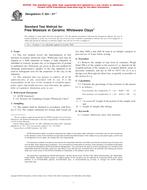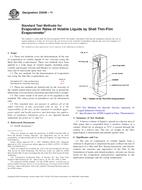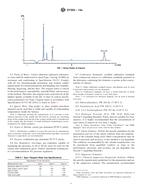1.1 This practice covers a standard means for measuring initial static sealing pressure in transportation applications.
1.2 It uses a pressure-indicating film (PIF) that will record the maximum load imprint of the seal-to-flange interfaces. The imprints will vary in intensity based on load across and along the interface.
1.3 These imprints can be used to determine if initial load on the gasket is adequate to attain a seal. These imprints may also indicate correct bolt torque sequence. These imprints may also be used to determine if the mating surface waviness or local flatness meets gasket requirements. Roughness is rarely found by PIFs because peak-to-peak wavelengths are too short. PIF is very good at finding waviness (peak to peak > 2.5 mm) and local flatness dips. PIFs provide an approximation of maximum pressures, and do not take into account relaxation of the joint after the torque sequence. Other methods involving dynamic measurement should be used if flange loading after relaxation is desired.
This standard does not purport to address all of the safety concerns, if any, associated with its use. It is the responsibility of the user of this standard to establish appropriate safety and health practices and determine the applicability of regulatory limitations prior to use.
Product Details
- Published:
- 10/01/2006
- Number of Pages:
- 2
- File Size:
- 1 file , 52 KB
- Redline File Size:
- 2 files , 100 KB


